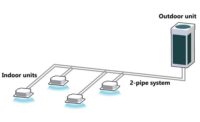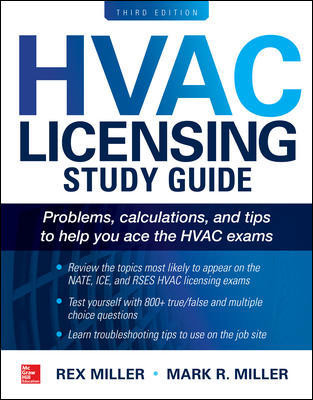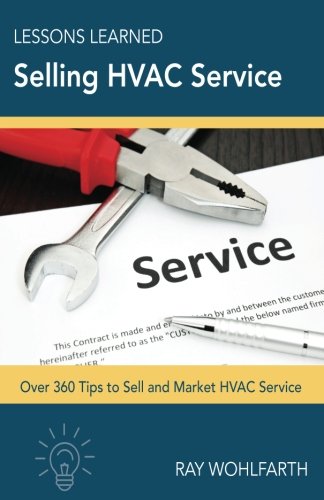
FIGURE 1. Typical VAV system with central return fan. (Schematic couresty of Trane Engineering.)
October gets us to the cusp of winter in a lot of the country. The cold-weather threats to good performance are outnumbered only by the possible strategies to combat them. Here, the authors look at humidity, economizers, pipe and coil insulation and placement, and more as they assess the design opportunities and pitfalls once the temperature takes a dive.
The design of effective HVAC systems in cold climates requires careful attention to several key factors. These include outdoor drybulb/wetbulb (db/wb) temperatures, indoor temperature and humidity requirements, the quality of the building envelope, insulation of pipes and coils, airside economizers, and building pressurization, among others. Proper attention to these issues will result in thermally comfortable indoor environments with a minimum of humidity and moisture is-sues.
This discussion focuses on Maine, where many of the buildings we have designed are located. Maine is generally indicative of HVAC design parameters in the northern tier states of the U.S.
Outdoor design temperatures
The table for climatic conditions listed in the2005 ASHRAE Handbook - Fundamentals, indi-cate, for example, that in Portland, ME, the 99.6% design outdoor db temperature is -1.6°F. This means that based on accumulated historical climate data, the outside air temperature should only drop below the -1.6°, 0.4% of the time.Practical experience however, has proven that this occurs quite a bit more often. If one takes a look at values for the 99.6% and 99% db temperatures in the 2001 ASHRAE Handbook - Fun-damentals vs. the 2005 edition, you would see, for about 20 stations located mostly in cold climates, the winter design temperature values are quite a bit lower. This is due to an algo-rithmic change, explained in ASHRAE (2004a), in which previous heating db design conditions were calculated from the db/dewpoint joint frequency matrix.
Indoor temperatures and humidity
In order to determine what the design DT is (temperature difference between the outdoor design temperature and the indoor temperature) both must be defined prior to beginning load calculations. We have already given an example of what might be used for wintertime outside air temperatures. To determine the desired indoor air temperatures, discussions must take place between the building’s owner/occupant and system designer.There are several factors that must be considered when determining a thermally comfortable en-vironment. These are metabolic rates, clothing levels, air temperature, air speed, and humidity. Generally speaking, winter indoor temperatures typically range between 68° to 72°. For systems where humidity control is not designed into the HVAC system, humidity levels will generally follow outside ambient humidity levels. ASHRAE Standard 55, “Thermal Environmental Conditions for Human Occupancy” states that there are no lower limits for humidity within a building. However, when humidity levels drop below 25%, occupants tend to experience non-thermal comfort issues, such as dry skin, irritation of mucus membranes, and static electricity generation.

FIGURE 2. Typical VAV system with central relief fan. (Schematic courtesy of Trane Engineer-ing.)
Building envelope condensation
One of the most critical design decisions made is in regards to a building’s envelope. There is very little point in designing a state-of-the-art HVAC system if the envelope designed to contain it is less than optimum. ASHRAE 90.1 Energy Standard provides specific criteria for the minimum con-struction requirements of a building’s envelope.The potential for condensation on exterior envelope elements is a significant concern in cold cli-mates. The development of sustainable buildings with better energy efficiency has driven a general improvement in building envelope design. However, the desire for better indoor comfort has increased the use of humidification within buildings. Low indoor humidity can lead quickly to dry, itchy skin and noticeable discomfort in the human eye and nose.
Providing an indoor environment with a minimum moisture level provides, as a minimum, relief from this discomfort and has been tied to improved healing in medical spaces. The dewpoint of spaces without humidity control can be as low as 25°. However, the dewpoint of humidified spaces can rise as high as 50°. In short, if any surface within a humidified buildings drops below the dewpoint of the indoor air, there is a strong potential for condensation to occur on that surface.
Even with improved building components, it is sometimes difficult to keep all exterior envelope sur-faces above these humidified space dewpoints. There have been instances of moisture forming on windows, window frames, window sills, doorframes, wall surfaces, and floor surfaces. These exam-ples have been the result of overcooling of surfaces due to cold exteriors, lack of proper insulation, lack of proper air movement, or lack of proper control.
If condensation persists, and the surface temperature drops below freezing, ice and frost can form, making the symptom even more obvious and objectionable to the occupant. Another problem with persistent condensation is that it can result in high moisture levels within the building material itself. This can lead to mold and mildew once warmer weather arrives.
Cold air intrusion
There are several methods to eliminating cold air intrusion. Obviously, a tight, well-insulated en-velope that does not allow the conduction of heat to the exterior is optimal. This helps to prevent the surface temperature from falling below the dewpoint of the air. Lack of proper insulation be-tween window sills and the exterior are common locations for this problem. Eliminating cracks along the perimeter can prevent difficult to remediate drafts, which can overcool surfaces. It is these cracks that lead most often to frost or ice formation.Better controls or zoning on the humidification system may also be necessary to prevent over dispersion of moisture. On one project, a separate control zone for the exterior envelope was de-signed. This zone supplied non-humidified, independent temperature-controlled air to the window headers to ensure that condensation on older windows would not occur. Although the original intent of this system was to provide dryer, warmer air to the most likely point of condensation in the building (the windows), it was difficult to ignore the resemblance of this zone to a conventional automobile defrost system.
Pipe/coil location issues
The location of piping system components is critical in cold climates. Obviously, any pipe that conveys water without glycol should be run inside the building’s complete insulation barrier. While this fact seems intuitive, floor plan considerations, constructability considerations, and the general quality of workmanship sometimes test this well-known requirement. We have seen many in-stances of cracked sprinkler and plumbing lines that were located inside an incomplete insulation barrier.The locations of heating and cooling coils are also an item of concern. These coils in AHUs have the potential to be in the ‘line of fire’ of cold, outdoor air. Unfortunately, it only takes a small current of freezing, stratified air to pose a risk to coils. Some common resolutions to this problem include sufficient freeze-stats, draining coils in the winter, adding glycol to the water, constant flow circulators on a dedicated coil loop, and backup control schemes.
Although freeze-stats are a first line of defense, it is not uncommon for these devices to be in-stalled improperly, limiting their effectiveness. Facility departments draining the coils on a spring/fall cycle can resolve this. Glycol can increase overall pumping energy but provides a relatively secure method of preventing frozen coils. Another time-tested solution for selected heating coils is the installation of a dedicated pump to keep the water in the coil moving. This method works well but can increase installation and operation costs.
Some control schemes continuously monitor the inside temperature of the air handler. If the tem-perature drops too low, a sequence of steps may commence. These steps can include de-energizing the unit, increasing hot water flow through the coil either through valve modulation or pump flows, or closing ancillary dampers to provide a tighter close-off against cold outdoor air.
Cold climates offer challenges as well as opportunities for building designers. Large expanses of finished space above a slab-on-grade are one challenge. These spaces can quickly exceed the effectiveness of perimeter radiation heating elements. Auditoriums are one common example of this type of space. Although the air temperature is appropriate four feet off the slab, the tempera-ture of the air at ankle level can be cold. People who are sitting for long periods in this type of construction can complain of uncomfortable ankles and feet.
This design challenge can be met with better insulation under the slab, and/or a radiant heating system within the slab. Control of this heating is critical, as it is possible to overheat the space with such a large slab.
Airside economizers
Airside economizers are a natural opportunity in cold climates. With increases in internal loading from computers and other equipment, the balance temperature for occupied buildings is continuously decreasing. (The balance temperature is the exterior temperature at which a building’s operational dynamic requires mechanical cooling for proper temperature control.) The outdoor air in cold climates can offer ‘free cooling’ for much of the year.However, overuse of this opportunity can result in improper moisture levels within the building. For example, cool exterior temperatures along the coast also typically come with high moisture levels. Overuse of an economizer in this situation can allow excessive water to enter the building without noticeable discomfort. However, when warmer temperatures arrive later in the day, the cooling equipment is faced with the task of removing not just the sensible heat but also the excess moisture that was allowed to enter the building during the morning economizer operation. This is a common situation where enthalpy-based changeovers should be used instead of db temperature-based changeovers.
Special care needs to be given to protecting the building utilities such as water, sanitary, gas, storm water, electric, etc., as they run into the building. Typically, frost in unprotected (non-snow covered) areas of the site drive down several feet below the finished grade. Building utilities are typically designed to be installed below these frost lines. Obvious risk of freezing and/or unwanted movement would be present if these special precautions were not incorpo-rated.
Building pressurization
Building pressurization in typical commercial construction is an important way to control un-wanted infiltration. In most cases, uncontrolled infiltration is a building’s enemy. Uncontrolled infiltration caused by negative building pressures has consequences in both increased building energy consumption and ultimate operating costs.Positive building pressure can be accomplished mechanically through synchronizing outside air quantities introduced into the building and return or relief fans. Building pressure can also be passively achieved non-mechanically through barometric relief points in the building. Pas-sive building pressure control most commonly consists of a gravity-operated damper in the occupied space. When the economizer operates, the positive pressure that develops inside the space pushes air out of the damper and prevents over-pressurization.
Building pressure control is important for two reasons:
- It is fundamental to attaining the design targets for infiltration and exfiltration.
- It enables proper door operation by preventing excessively positive or negative pressure.
Building system selection
The selection of the right HVAC system for buildings in cold climates is subjective and always a topic of discussion amongst design engineers. The old adage about putting five engineers in a room with one problem and getting 25 solutions is certainly more relevant in today’s design environment, simply due to the choices and options available with more advanced technologies.Whether the systems are constant volume, variable volume, all air, a combination of air and hydronics, or any combination of the above, the common denominator in system selection and design always falls back to proper sizing and protection of all the system’s components from exposure to the elements. Simple due diligence and a high level of awareness to the climate in which the systems are being designed is paramount to success.
Designing HVAC systems for cold climates presents multiple unique challenges, not unlike mirrored challenges presented when designing systems for hot, humid climates. This informa-tion provides a snapshot of a few of the design opportunities and hurdles that must be con-sidered when performing HVAC design work in cold climates. There are specific steps that must be followed and precautions taken to ensure a project that ultimately meets the needs of the client.ES




